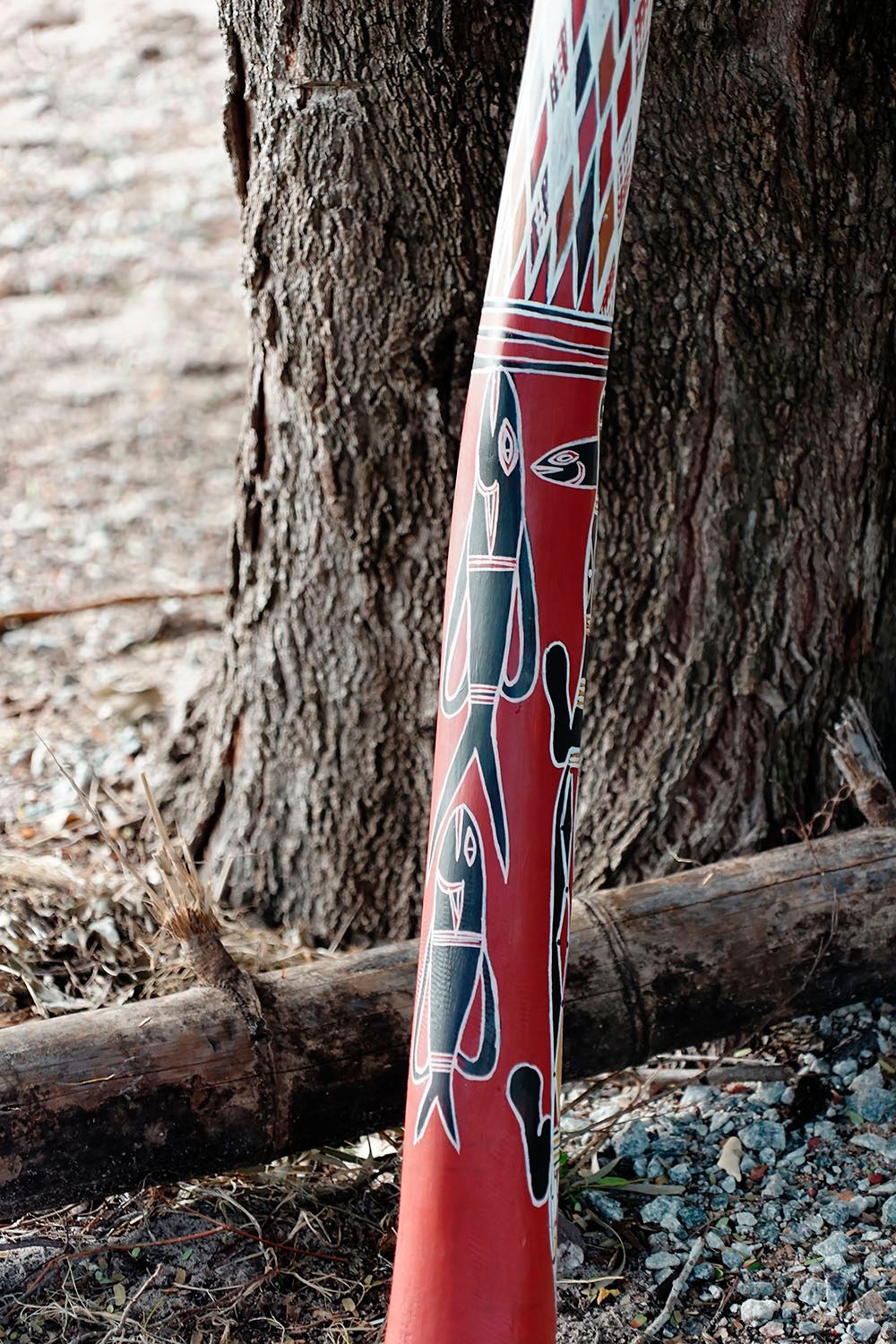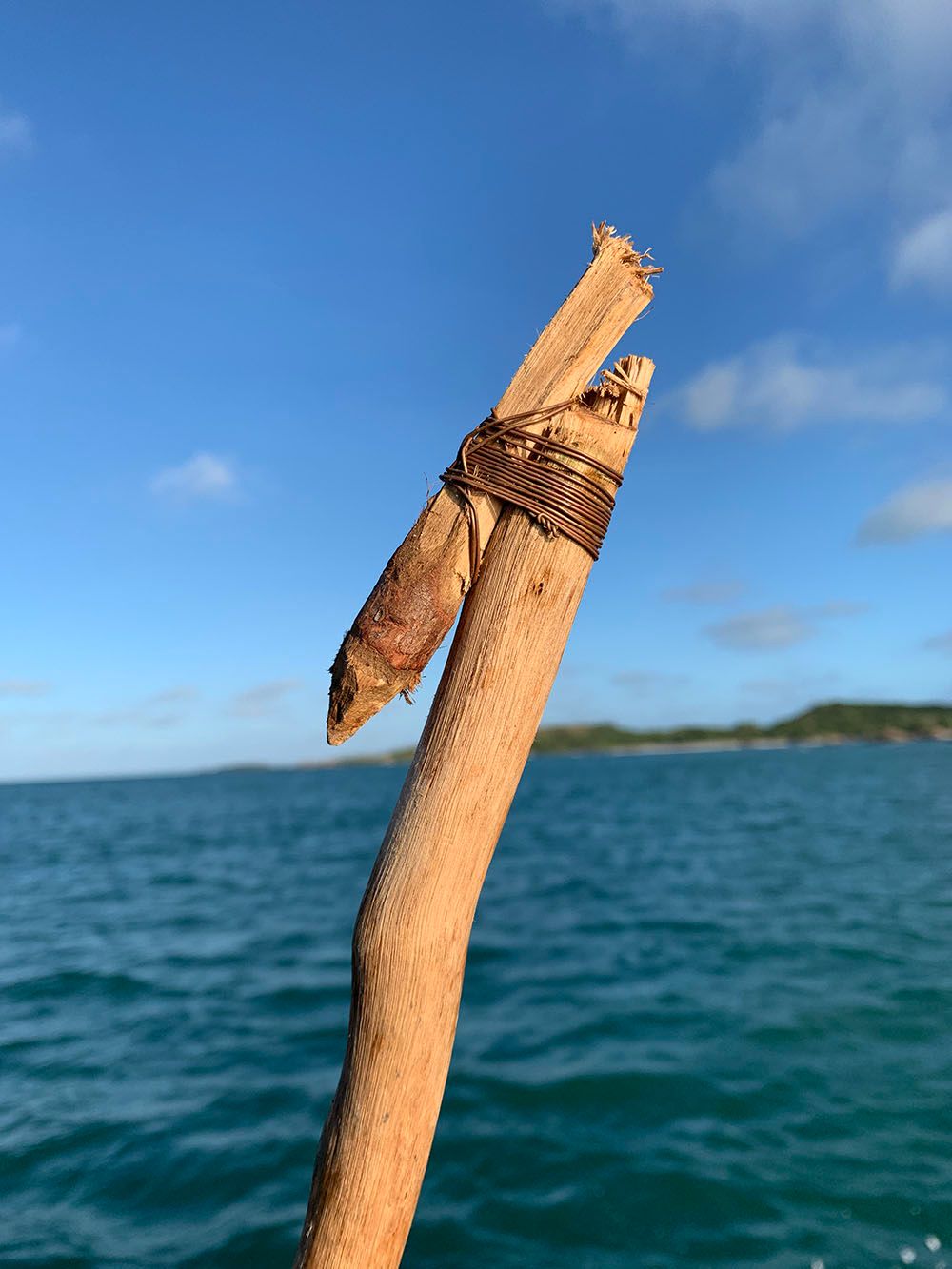By Adam James
Photography Ben Lindell

“We belong to this land in north-east Arnhem Land, Australia...We are first people, we were born here and we know the language, the country, the culture. We are Yolngu.” Laklak Burarrwanga.
In May 2019, I had the incredible opportunity to visit Bawaka – a tiny community nestled along the protected coast of East Arnhem Land, an area pretty close to being the northernmost tip of Australia. The trip was organized by Ben Lindell, a longtime friend and adopted member of the Burarrwanga family. It was an opportunity for chefs Shinobu Namae, David Moyle and me, to learn from, and share food knowledge and culture with, the traditional owners.
There are many differences between Australia’s 60,000 year old indigenous culture and the culture of those that have joined their community since the arrival of Europeans. The one thing we all have in common is food...To hunt for food, cook it and then eat together is the perfect way to learn to understand each other’s situation and culture.” Ben Lindell
The following is just a glimpse of what we learned.
DAY 1 – On arrival into Arnhem Land, we were met by Djawa, the head of the family, and his brother Rrawun. After quick introductions, they escorted us in four-wheel drives through swamps, waterholes, and scrub. There was no road to speak of. After an hour or so, we reached the beach and, soon thereafter, Bawaka. The environment throughout was incredibly diverse and alive: patches of red, iron-rich earth, tropical trees, plants, billabongs and sandbanks.
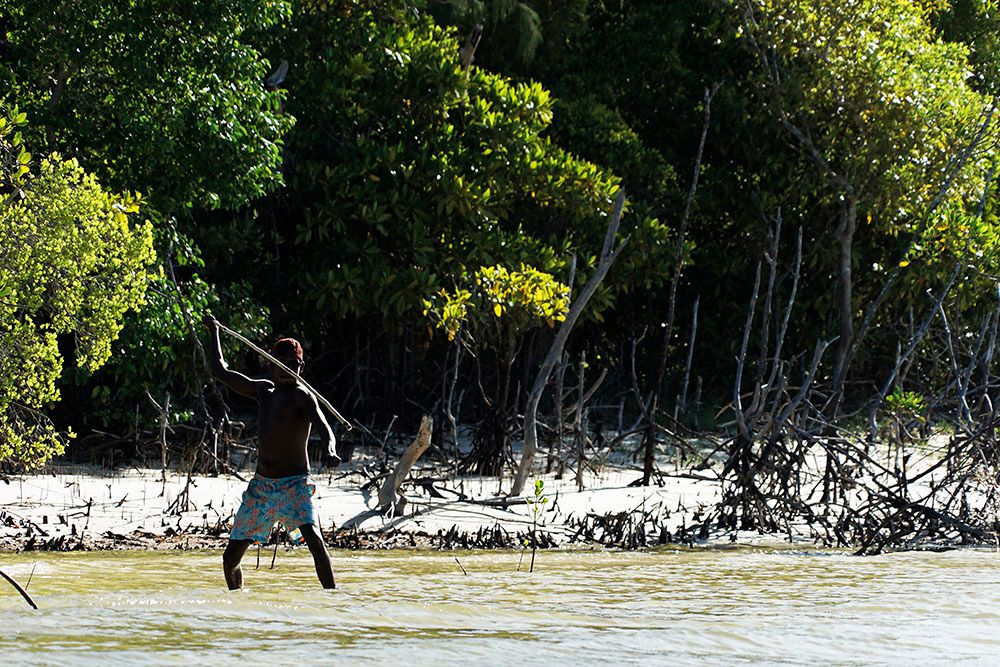
Upon arriving in Bawaka, we were introduced to the Burarrwanga family, including resident crocodile Nike, who regarded us outsiders with significant interest.
“My husband knew Nike as a baby. He knows us. We talk to baru (crocodiles), they talk back. They make moves with their head, and make sounds: ‘Ack ack ack haaaaa.’ They talk, and we talk back by hitting the ground. One time (they) want to come to catch this baru, Nike, but we said no, he is part of our family, a protector of our land. Nike may be protecting this area and protecting us because of my husband’s spirit. Sometimes animals can turn into humans, transforming from animal form to human form and back again, carrying story and song, and creating and passing on law. Nike sometimes comes hunting with us, following us to get some food. Sometimes we think Nike might have died. Then he comes around and splashes the water to tell us he’s there. So he is part of our family. He’s sacred.” Laklak Burarrwanga
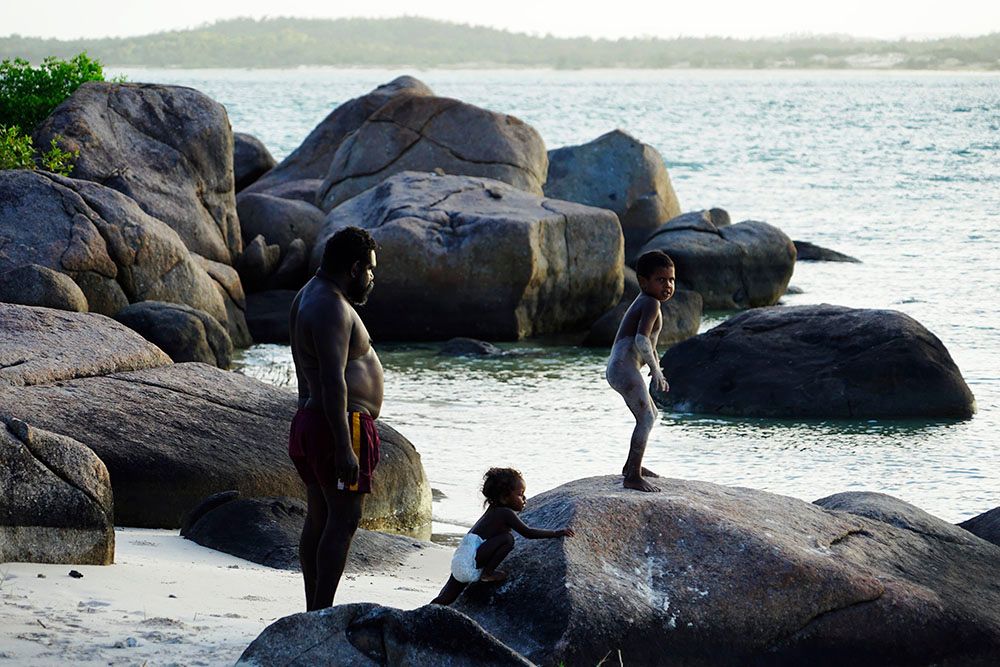
The setting was idyllic, a beautiful beach dotted with coconut palms and tamarind trees – ingredients that we used cooking together over the next couple of days.
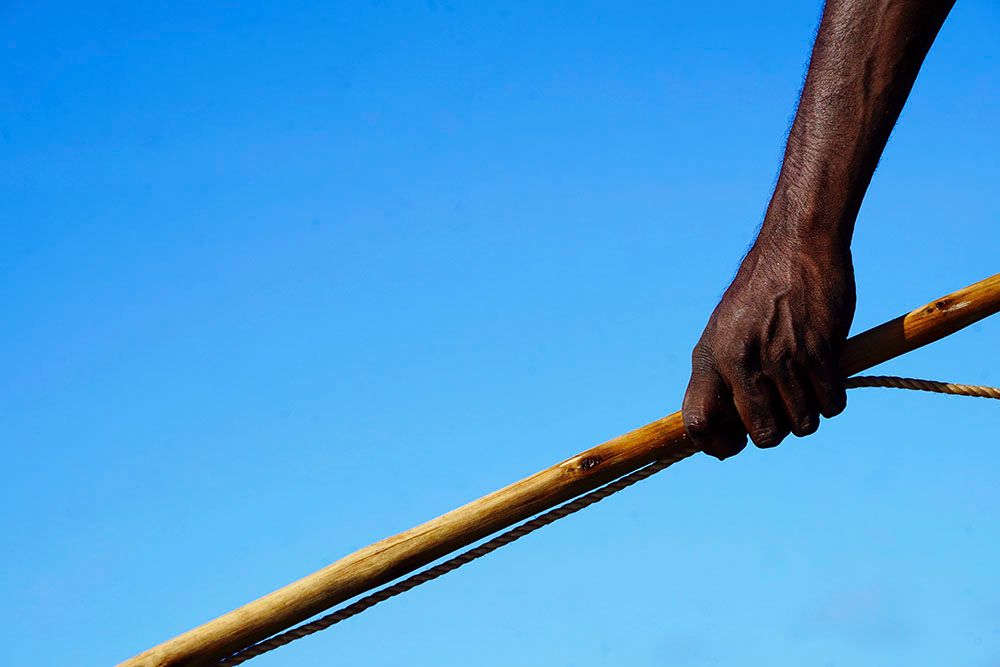
Soon after arriving, the brothers decided it was time to catch some dinner. We climbed into a four-wheel drive and headed for one of the beaches we had passed on the way. It was straight into the water with spears and a net, and I can still recall the looks on our faces – we knew these waters were teeming with saltwater crocodiles. But we trusted our hosts and, within minutes, had a bulging catch of mullet.
Back at Bawaka we lit a fire, cooked our catch and began sharing stories of our respective cultures: Yolongu, Japanese, new Australian. We were also privileged to witness some weaving that Rita, Djawa’s wife, and the other women were creating out of palm leaves.
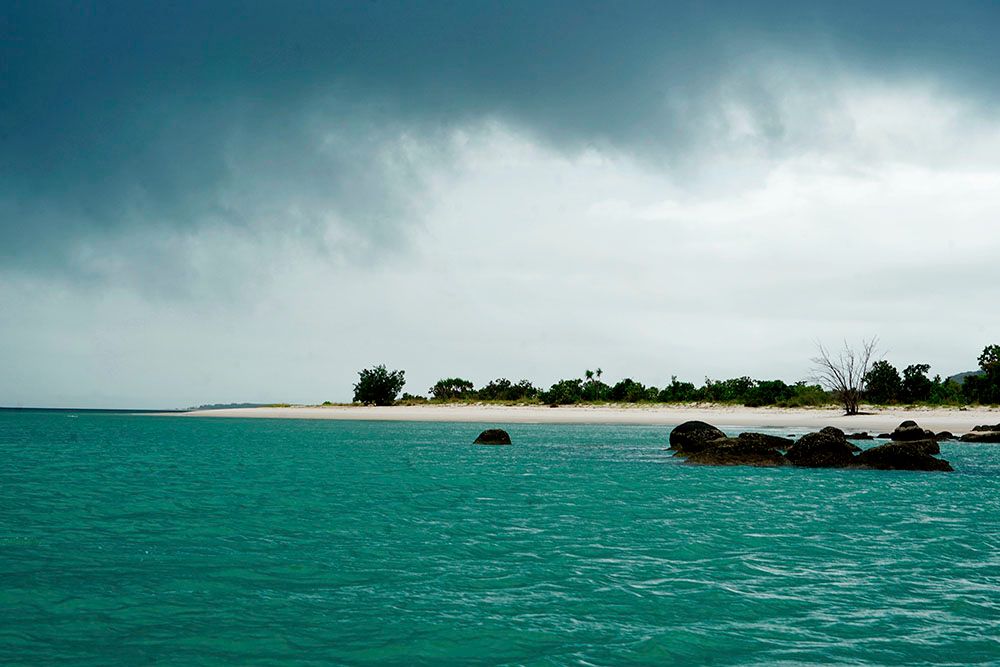
DAY 2 – We woke early and, after a quick breakfast, we were taken out on the boat with Rrawun. The water was an incredible emerald colour and teeming with life, including crocodiles and sharks. We landed a couple of barracuda and a sweet lip, although Rrawun was really after a turtle or a dugong.
In the afternoon, we went foraging with Rrawun’s younger brother Theo and watched him spearing stingray, which he spotted from some 25 meters away. He also speared some mud crabs while the women and children were harvesting maypal (shellfish).
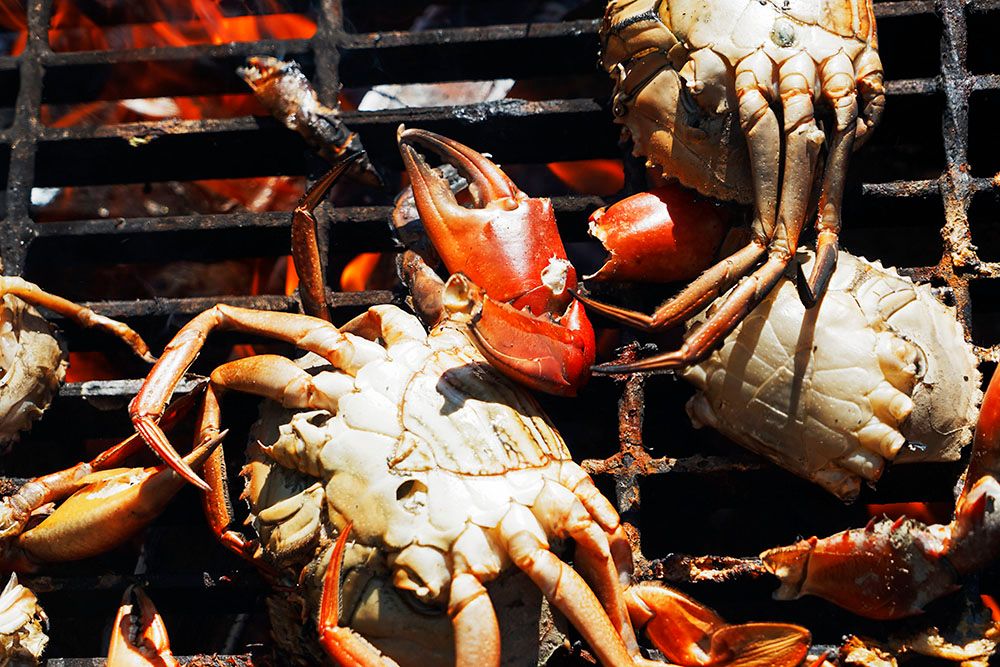

Back at Bawaka, we grilled mud crab and barracuda and Theo prepared the stingray. He removed the liver then boiled it – peeled off the skin, then worked the raw liver through the poached flesh and formed little balls. Absolutely delicious. He also explained that the liver can only be eaten at certain times of year as it can be poisonous. He knows when it’s OK because a certain flower is blooming. This is the kind of knowledge that has been passed down through the generations.
We learn the knowledge from our grandparents, walking in the land, telling the stories. Or we sing the songlines”. Laklak Burarrawanga
In the evening, we feasted together on the beach and Rrawun and Theo, both exceptional musicians, played us some of their songs.
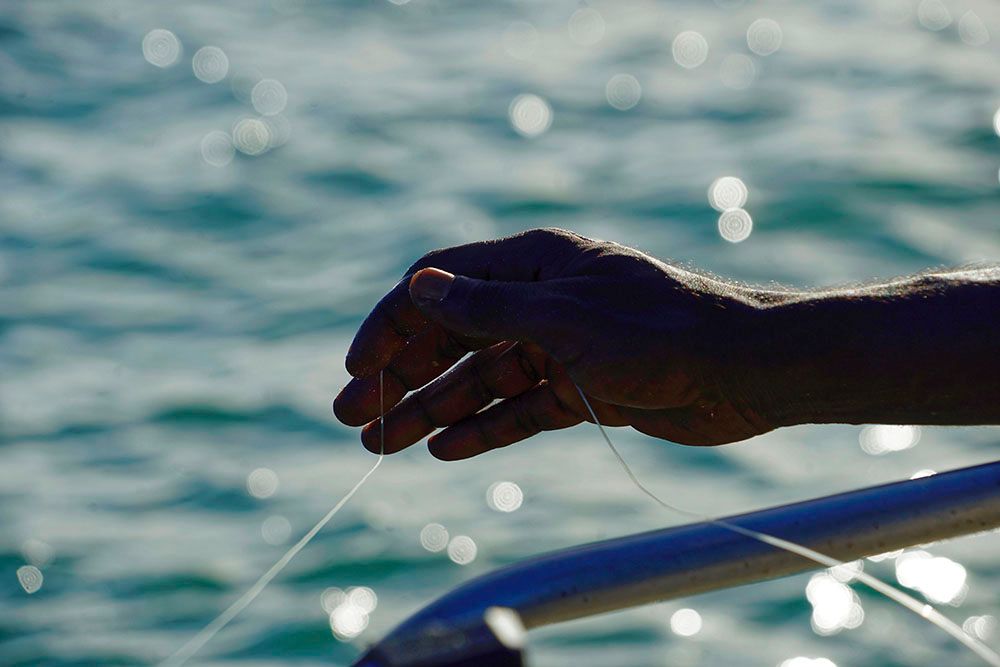
“As the seasons change, we think of the old people, the ancestors, we think of gathering maypal.” Djalu Gurruwiwi
DAY 3 – After a tropical downpour in the morning, we started the day fishing from the boat. While Namae lost a giant trevally at the last second to a shark, he still got the catch of the day with a large rock cod. Barracuda was also to be on the menu that night.
In the afternoon, when the tide was low, Djawa took us to the mangroves to gather more maypal, which form a very significant part of the Yolngu diet. We trekked knee-deep in mud through the vast mudflats. The harvest included dhan’pala (mud mussels) galpunanin (cockles), dhupugadi (toothed top-snails), nonda (long bums) and one giant nyoka (mud crab).
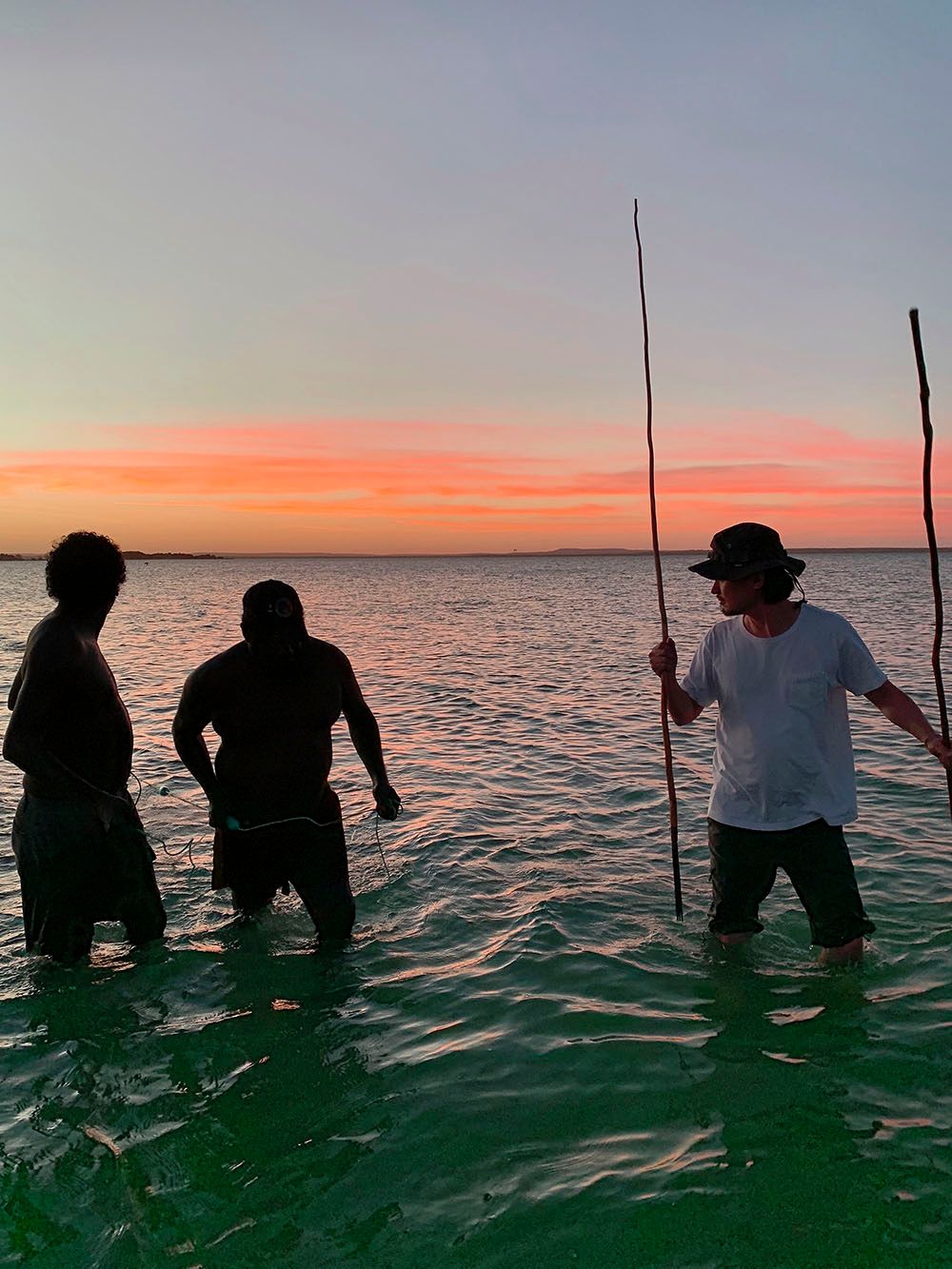
You can’t take language away, language is inside.” Buthiman Dhurrkay
